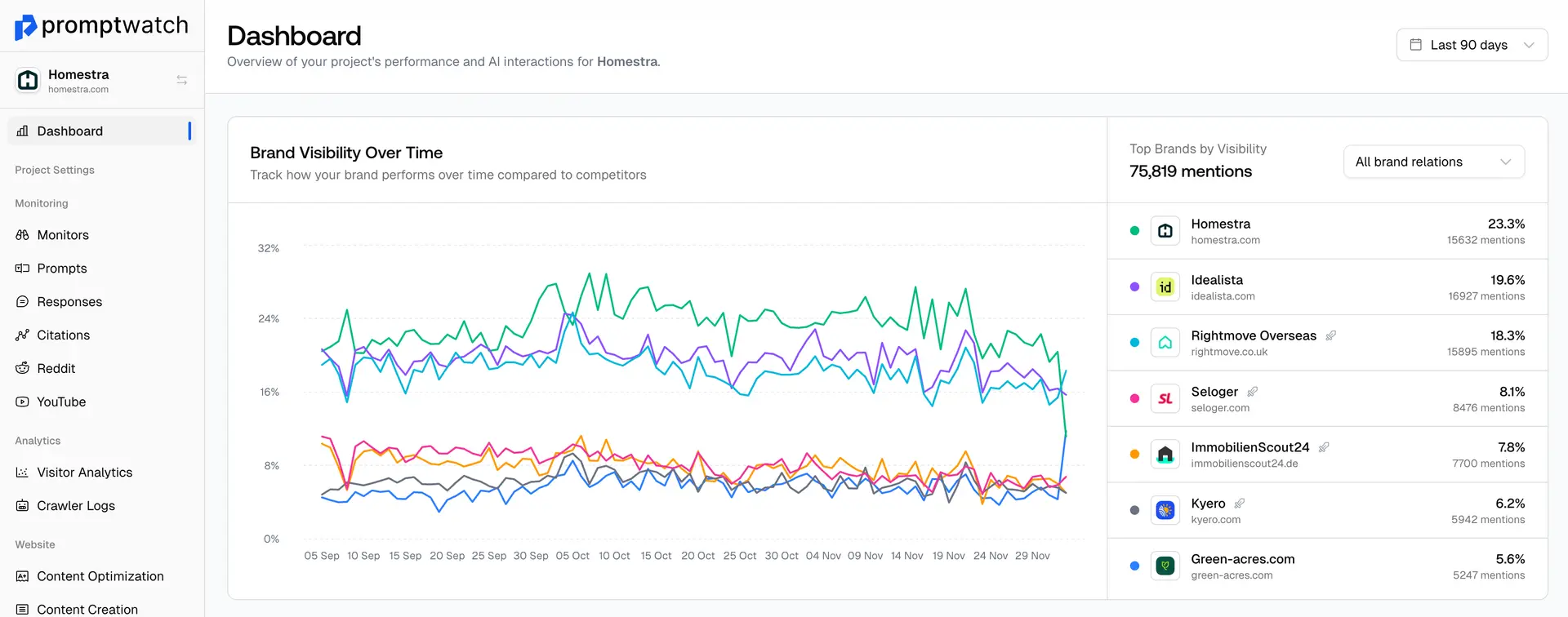Definition
Sentiment Monitoring is the systematic process of tracking and analyzing public sentiment, opinions, and emotional responses about brands, topics, products, or content across digital platforms, social media, and increasingly, AI-generated responses. This practice helps businesses understand public perception, identify reputation risks, and measure the effectiveness of their communication strategies.
Traditional sentiment monitoring focuses on social media posts, news articles, reviews, and online discussions. In the AI era, sentiment monitoring must also include analyzing how AI systems represent and discuss brands when generating responses to user queries, as these representations can significantly impact public perception.
Sentiment monitoring involves automated sentiment analysis using natural language processing, manual review and human interpretation, trend analysis over time, competitor sentiment comparison, and crisis detection and early warning systems. Modern tools can analyze text, images, and video content to determine positive, negative, or neutral sentiment.
For AI-powered search and GEO strategies, sentiment monitoring is crucial because AI systems may reflect and amplify existing online sentiment when discussing brands or topics. Negative sentiment in training data or real-time sources can lead to unfavorable AI representations, while positive sentiment can improve AI recommendation likelihood.
Key applications include brand reputation management, product launch monitoring, crisis response and damage control, competitive intelligence, customer feedback analysis, content strategy optimization, and influencer and partnership assessment.
Sentiment monitoring tools range from social media monitoring platforms like Hootsuite and Sprout Social, to specialized sentiment analysis tools, AI-powered analytics platforms, and custom solutions that can monitor AI system responses for brand sentiment.
The goal is to maintain a comprehensive understanding of public perception across all channels where opinions are formed and shared, including the increasingly important channel of AI-generated content and recommendations.
Examples of Sentiment Monitoring
- A technology company monitoring sentiment across social media and AI platforms to track public perception of their latest product launch
- A restaurant chain using sentiment analysis to identify and respond to negative reviews and feedback across multiple platforms
- A B2B software company monitoring how AI systems discuss their brand compared to competitors in generated responses
